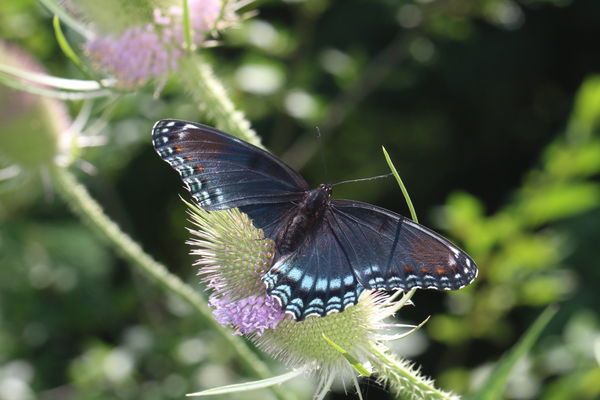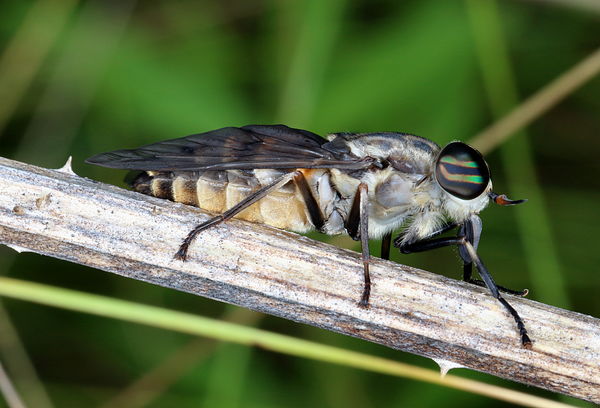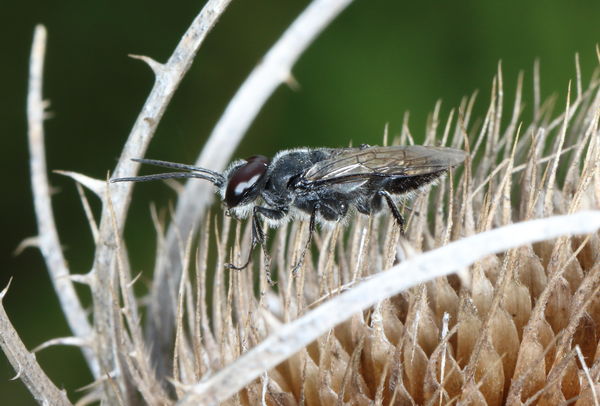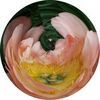More from the summer
Jan 5, 2019 12:47:18 #
I had rented the Canon mp-e 65mm super macro lens, intending to bring it with me for the vacation to Maui. Just holding the legendary lens was in itself a special moment. But while playing with it in the field I soon decided that having three lenses (the super macro, the regular 100mm macro, and a zoom lens) was rather inefficient for Maui because I was even more likely to have the wrong lens on the camera when something picture-worthy was found.
But the lens was still fun to use around town. Here are some ‘candy-striped’ leafhoppers (Graphocephala coccinea) that were taken with it. Most of these colorful jewels are red and blue, but some are red and green.
 Candy-striped leafhopper by Mark Sturtevant, on Flickr
Candy-striped leafhopper by Mark Sturtevant, on Flickr
 Candy-striped leafhopper by Mark Sturtevant, on Flickr
Candy-striped leafhopper by Mark Sturtevant, on Flickr
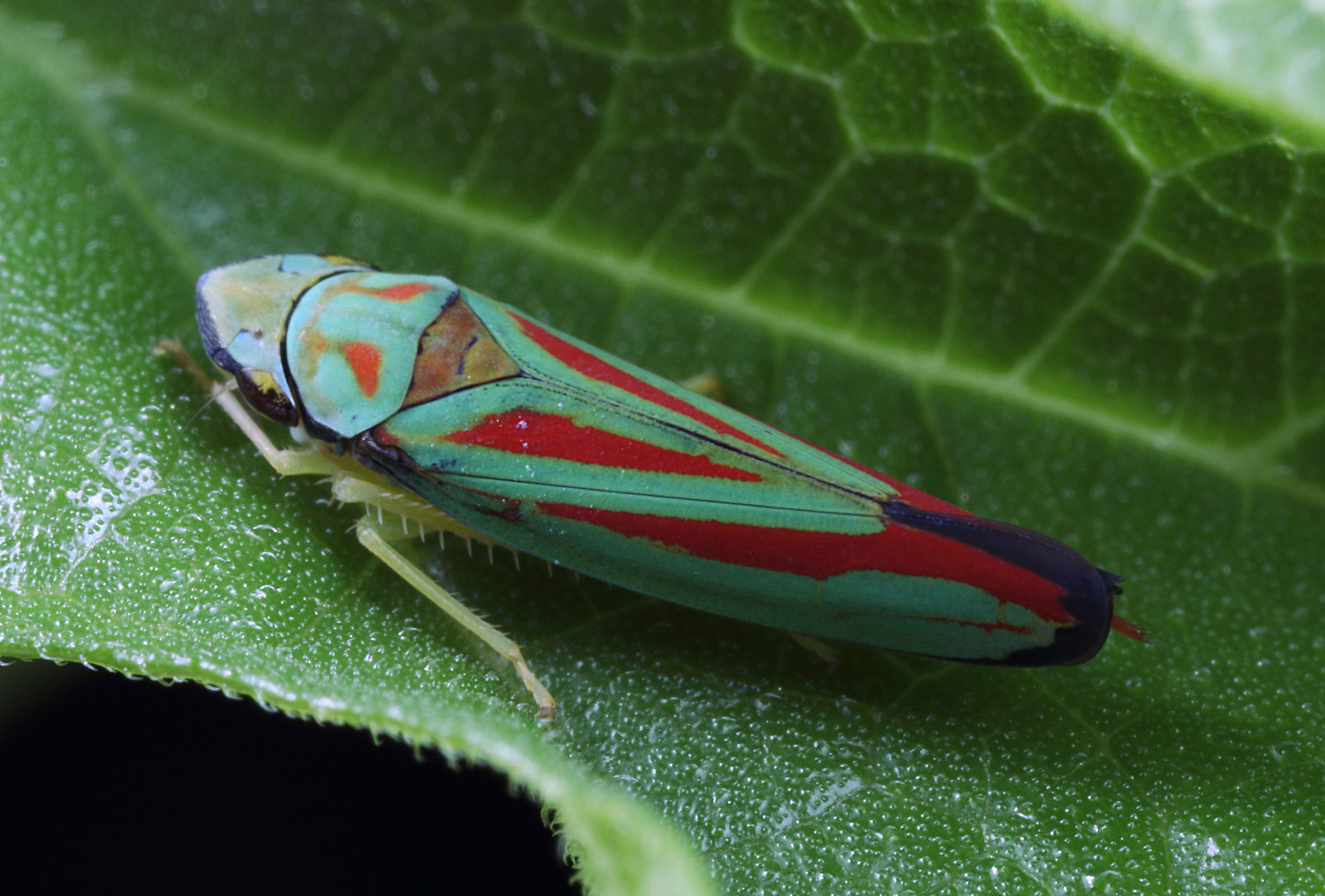 Candy-striped leafhopper by Mark Sturtevant, on Flickr
Candy-striped leafhopper by Mark Sturtevant, on Flickr
The rest of the pictures were taken with my usual lenses.
Next is caterpillar that took me a while to identify. It is the variable oakleaf caterpillar (Lochmaeus manteo), which is a member of the ‘Prominent moth’ family. The oddly extended rear prolegs help identify it to this family.
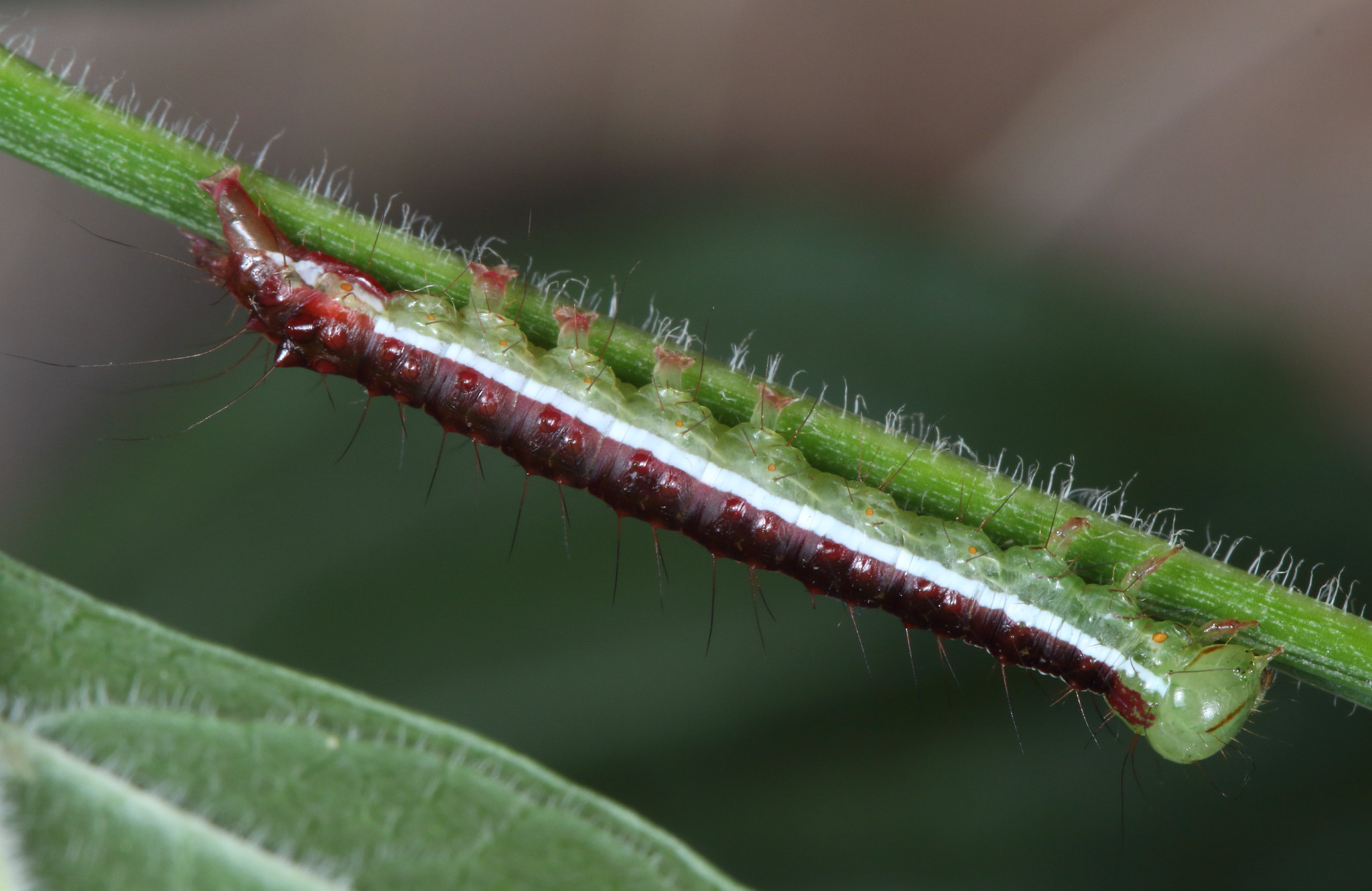 Variable oakleaf caterpillar by Mark Sturtevant, on Flickr
Variable oakleaf caterpillar by Mark Sturtevant, on Flickr
Next is a red-spotted-purple butterfly (Limenitis arthemis). I had long been curious about these tall, thistle-like weeds that are shown in these pictures. So I showed them to my wife (who is a Botanist), and she told me the plant is called teasel. I see it everywhere, and it is interesting in its own right while also being a magnet for insects.
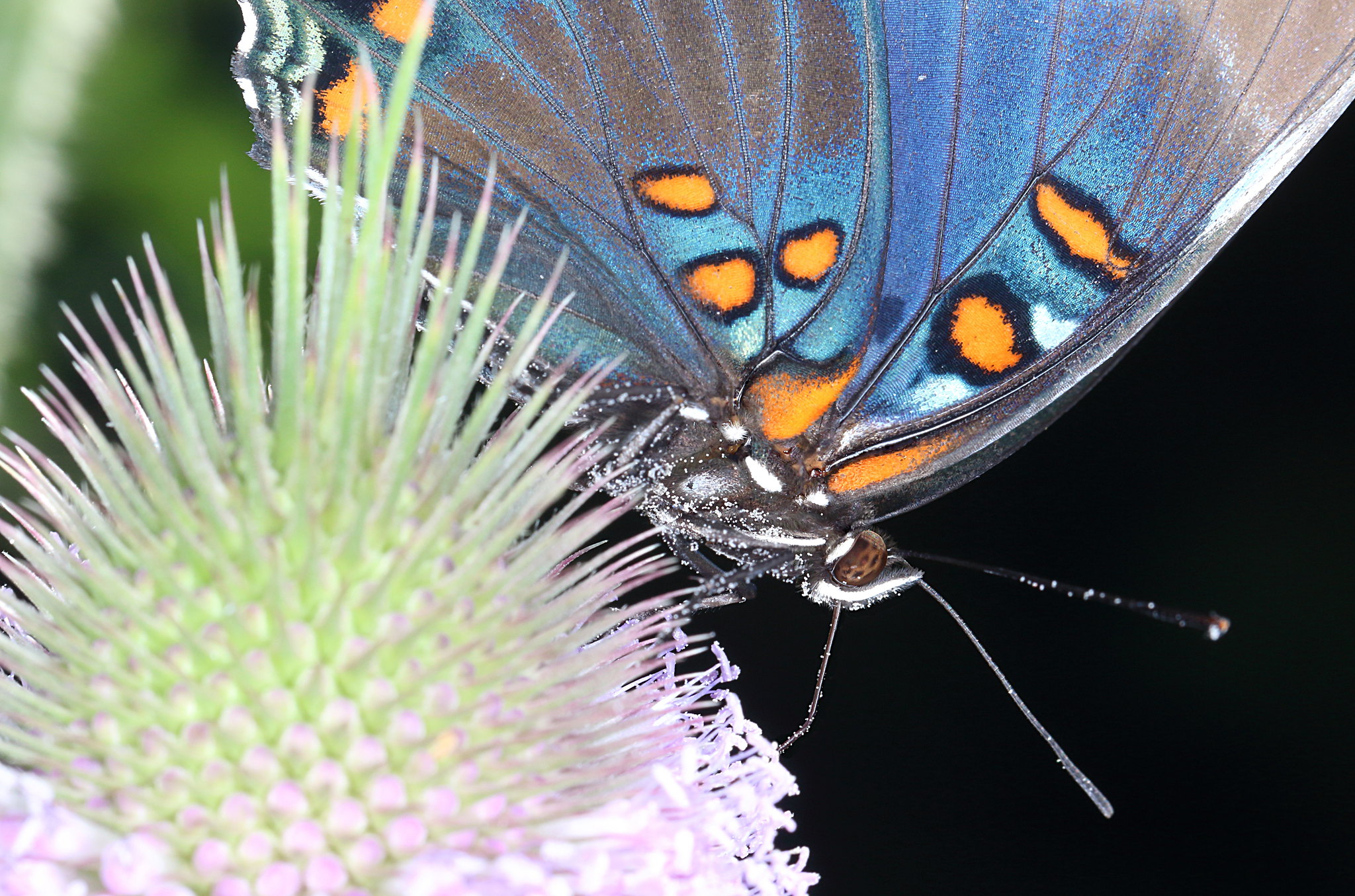 Red spotted purple by Mark Sturtevant, on Flickr
Red spotted purple by Mark Sturtevant, on Flickr
The butterfly actually had a seriously damaged wing. I generally like that kind of thing (it shows 'character'), but I wanted to fix this one in post-processing so I did that in Gimp. So this picture is "after" the wing is fixed.
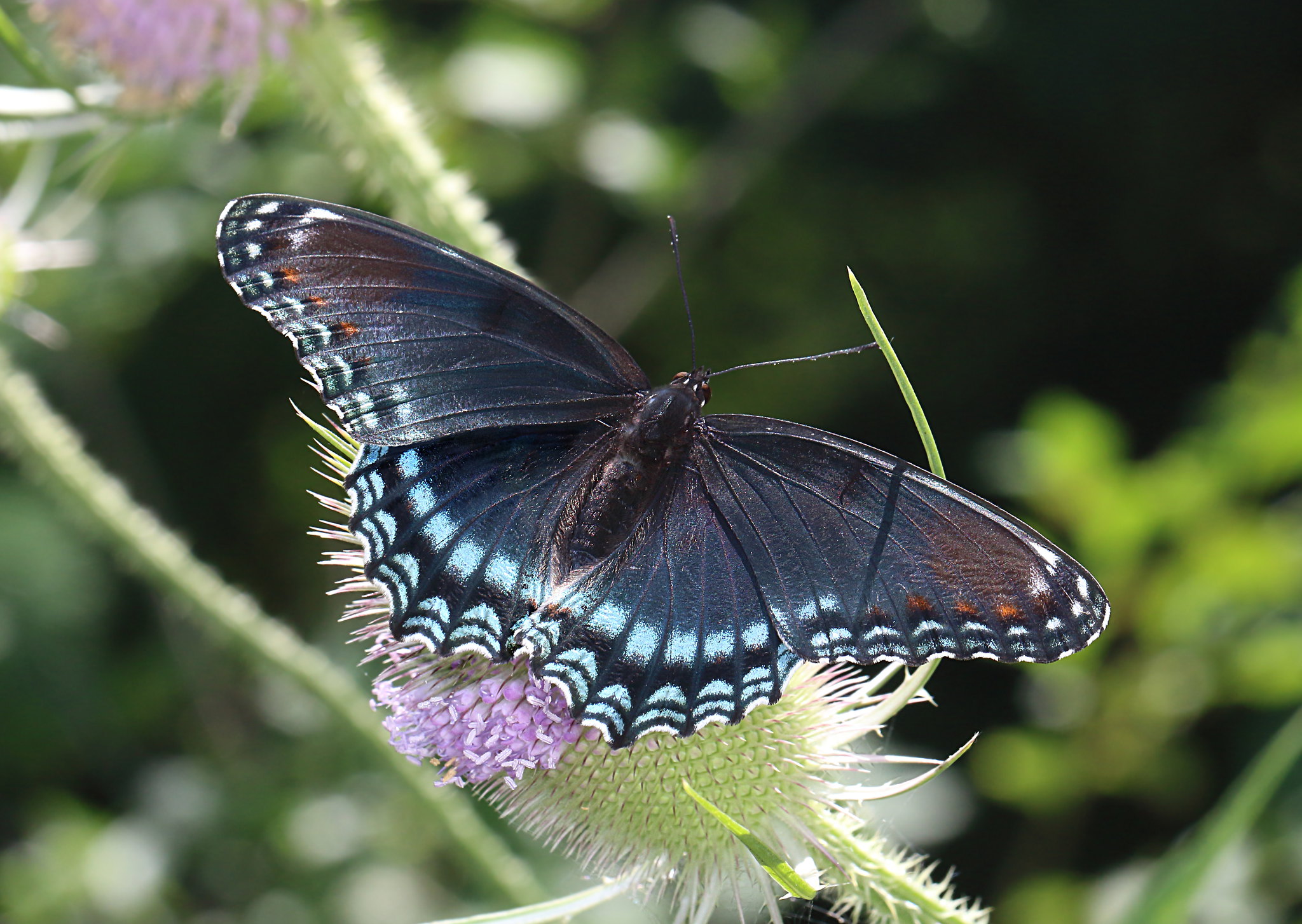 Red spotted purple by Mark Sturtevant, on Flickr
Red spotted purple by Mark Sturtevant, on Flickr
As for the rest...
The next picture shows the original, with the damaged wing. You can compare 'before' and 'after'.
The horsefly is possibly Hybomitra sp.
Finally, on occasion I come across the strange bee that is shown in the last picture. It turns out to be a kleptoparasitic leaf cutter bee (Coelioxys)! That means that females lay eggs in the nests of other leaf cutter bees and the larva eats all the food. I think this one is a male. They are very alert and this one had to be photographed at some distance and so the picture is heavily cropped.
But the lens was still fun to use around town. Here are some ‘candy-striped’ leafhoppers (Graphocephala coccinea) that were taken with it. Most of these colorful jewels are red and blue, but some are red and green.
 Candy-striped leafhopper by Mark Sturtevant, on Flickr
Candy-striped leafhopper by Mark Sturtevant, on Flickr Candy-striped leafhopper by Mark Sturtevant, on Flickr
Candy-striped leafhopper by Mark Sturtevant, on Flickr Candy-striped leafhopper by Mark Sturtevant, on Flickr
Candy-striped leafhopper by Mark Sturtevant, on FlickrThe rest of the pictures were taken with my usual lenses.
Next is caterpillar that took me a while to identify. It is the variable oakleaf caterpillar (Lochmaeus manteo), which is a member of the ‘Prominent moth’ family. The oddly extended rear prolegs help identify it to this family.
 Variable oakleaf caterpillar by Mark Sturtevant, on Flickr
Variable oakleaf caterpillar by Mark Sturtevant, on FlickrNext is a red-spotted-purple butterfly (Limenitis arthemis). I had long been curious about these tall, thistle-like weeds that are shown in these pictures. So I showed them to my wife (who is a Botanist), and she told me the plant is called teasel. I see it everywhere, and it is interesting in its own right while also being a magnet for insects.
 Red spotted purple by Mark Sturtevant, on Flickr
Red spotted purple by Mark Sturtevant, on FlickrThe butterfly actually had a seriously damaged wing. I generally like that kind of thing (it shows 'character'), but I wanted to fix this one in post-processing so I did that in Gimp. So this picture is "after" the wing is fixed.
 Red spotted purple by Mark Sturtevant, on Flickr
Red spotted purple by Mark Sturtevant, on FlickrAs for the rest...
The next picture shows the original, with the damaged wing. You can compare 'before' and 'after'.
The horsefly is possibly Hybomitra sp.
Finally, on occasion I come across the strange bee that is shown in the last picture. It turns out to be a kleptoparasitic leaf cutter bee (Coelioxys)! That means that females lay eggs in the nests of other leaf cutter bees and the larva eats all the food. I think this one is a male. They are very alert and this one had to be photographed at some distance and so the picture is heavily cropped.
Jan 5, 2019 13:21:40 #
Love your photos Mark. I have some images of that leafhopper also, but nowhere as good as yours. Thanks for the post. 

Jan 5, 2019 14:04:00 #
Beautiful images, Mark. I was going to identify the Teasel for you, but now that I know your wife is a botanist maybe I should steer away from commenting on the plants in your photos. 
I saw a lot of that in the field downstate this year. It is native to Eurasia. I think that is Dipsacus fullonum, first collected in Michigan way back - 1844 or so. It has been spreading ever since and has become a problem. Biological controls are awaiting USDA approval.
Mike

I saw a lot of that in the field downstate this year. It is native to Eurasia. I think that is Dipsacus fullonum, first collected in Michigan way back - 1844 or so. It has been spreading ever since and has become a problem. Biological controls are awaiting USDA approval.
Mike
Jan 5, 2019 15:43:00 #
Blenheim Orange wrote:
Beautiful images, Mark. I was going to identify th... (show quote)
Feel free to identify future plants! That is something that i would like to learn. Did not know that teasel was invasive, but am not surprised. At present I welcome it but that may change. The hord of Phragmites chocking the wetlands is something I would love to not see around here.
Jan 5, 2019 16:03:55 #
Jan 5, 2019 17:23:01 #
Mark Sturtevant wrote:
Feel free to identify future plants! That is something that i would like to learn. Did not know that teasel was invasive, but am not surprised. At present I welcome it but that may change. The hord of Phragmites chocking the wetlands is something I would love to not see around here.
It is an interesting and attractive plant. By the way, the name "Teasel" is related the fact that the seed head of the plant was used to "tease wool." But the process - '"teasing" wool - may have been named after the plant, and not the other way around. "Teasel" from Germanic languages is the origin in for the modern English word "thistle," and thistles and teasels are often confused with one another.
The species name for the plant fullonum, and the common name "Fuller's teasel" comes from the name for "fullers," the craftspeople who "fulled" - matted together, or made into felt - the cloth after weaving.
It gets worse. The most common thistles are in the genus Genus Carduus, and that may be where we got the English term "carding" for raising the nap on wool.
I saw quite a bit of Teasel last year in Timberland swamp, near Andersonville in Oakland county. As that is one of the last remaining holdouts for native plants in the area, I was disappointed to see it. There was a lot of Joe Pye weed in the same area, and the butterflies - Fritillaries, Monarchs, Red-spotted purples, Tiger swallowtails - were choosing that over the Teasel.
Below is a photo of a wool card with teasels.
Mike
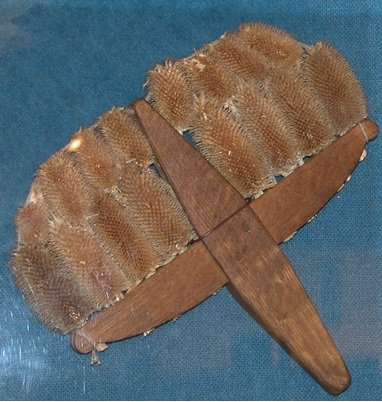
Jan 5, 2019 17:57:59 #
Jan 5, 2019 18:44:53 #
An interesting set but the caterpillar is a favourite for me, I love the colour of it.
Jan 5, 2019 22:39:24 #
Jan 6, 2019 10:32:36 #
Jan 6, 2019 13:10:33 #
If you want to reply, then register here. Registration is free and your account is created instantly, so you can post right away.

